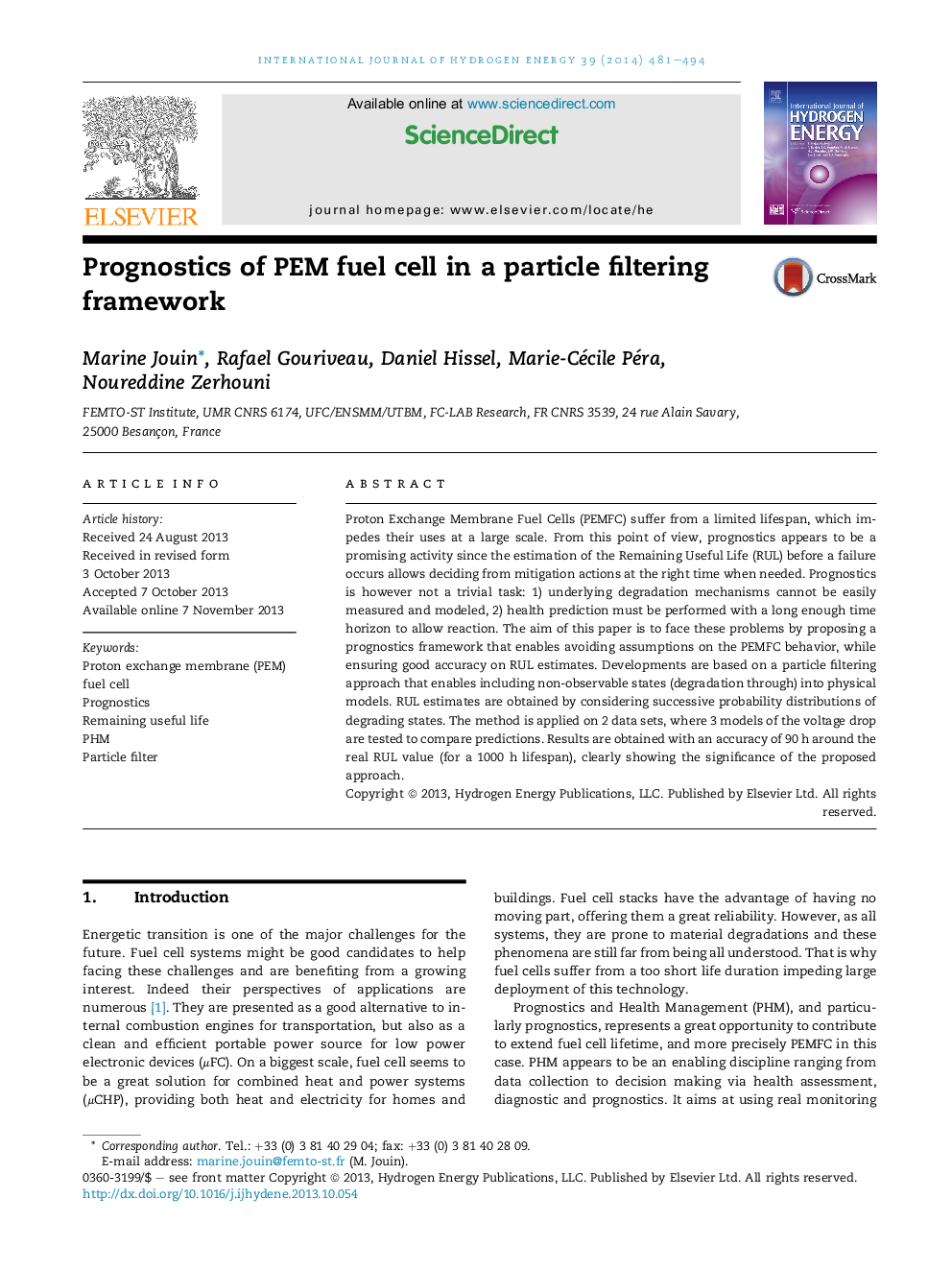| Article ID | Journal | Published Year | Pages | File Type |
|---|---|---|---|---|
| 1273962 | International Journal of Hydrogen Energy | 2014 | 14 Pages |
•This paper is the first one dealing with prognostics of PEMFC.•A framework is proposed to predict remaining useful life of a PEMFC stack.•The approach merges non-observable states (degradation) with a physical model.•Three empirical models for the stack voltage drop are tested and compared.•The prediction accuracy is of 90 h for a 1000-h lifespan.
Proton Exchange Membrane Fuel Cells (PEMFC) suffer from a limited lifespan, which impedes their uses at a large scale. From this point of view, prognostics appears to be a promising activity since the estimation of the Remaining Useful Life (RUL) before a failure occurs allows deciding from mitigation actions at the right time when needed. Prognostics is however not a trivial task: 1) underlying degradation mechanisms cannot be easily measured and modeled, 2) health prediction must be performed with a long enough time horizon to allow reaction. The aim of this paper is to face these problems by proposing a prognostics framework that enables avoiding assumptions on the PEMFC behavior, while ensuring good accuracy on RUL estimates. Developments are based on a particle filtering approach that enables including non-observable states (degradation through) into physical models. RUL estimates are obtained by considering successive probability distributions of degrading states. The method is applied on 2 data sets, where 3 models of the voltage drop are tested to compare predictions. Results are obtained with an accuracy of 90 h around the real RUL value (for a 1000 h lifespan), clearly showing the significance of the proposed approach.
